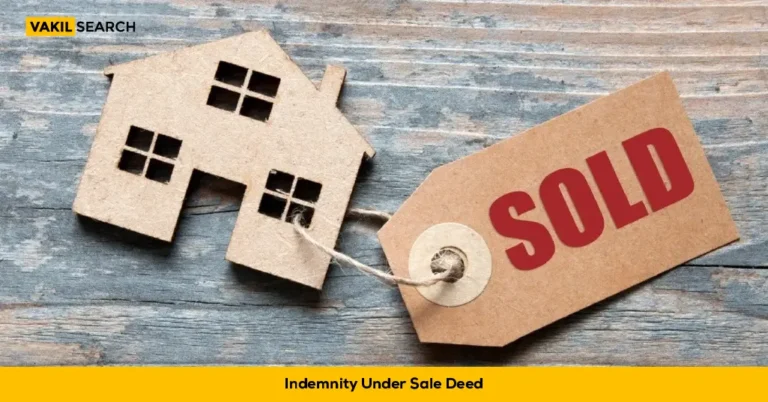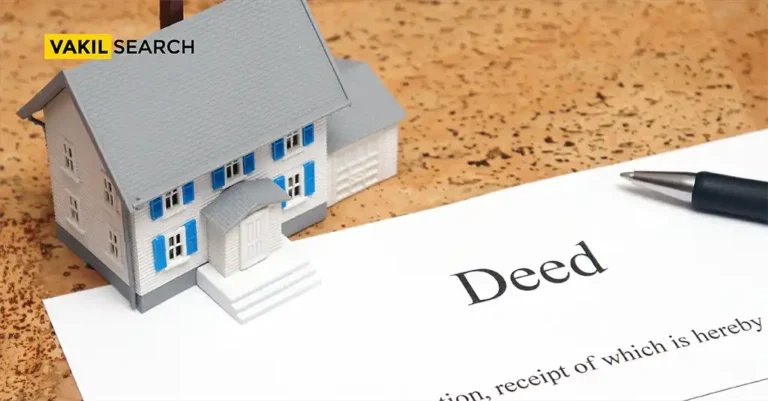Property transactions can be complex, with legal documentation being a critical part of the process. A Sale Deed, a vital document in this regard, serves as proof of sale and transfer of ownership. It ensures transparency, and protection against fraud, and provides a clear record of transactions. Our blog dives into the details of Sale Deeds, including their definition, advantages, and the information they must include. Additionally, we provide a step-by-step overview of how to obtain a Sale Deed, the documents required for property registration, and answers to frequently asked questions. This comprehensive guide aims to ease your real estate dealings, providing clarity and understanding in an often perplexing field.
Introduction
A property transaction is not just an exchange of money for an asset; it’s a comprehensive process with significant legal implications. Whether you’re buying your dream home, investing in real estate, or simply involved in an inherited property dispute, understanding the intricacies of property documentation is critical. One of the most important documents that make an appearance in the process is a Sale Deed. This article aims to elaborate on Sale Deeds, what they include, their benefits, how you can obtain one, and other necessary details.
What is a Sale Deed?
A Sale Deed, also known as a conveyance deed, is a legal document that plays a pivotal role in the transfer of ownership of a property. It serves as the main document for the transfer of property from one person to another, establishing proof of sale and the transfer of ownership.
The deed contains explicit information regarding the seller and the buyer, the property details, and the terms and conditions agreed upon by both parties. It is signed, witnessed, and often sealed by a notary. It becomes legally binding only after it is duly registered at the local registrar office under the Registration Act, 1908.
Advantages of a Sale Deed
A Sale Deed offers a plethora of advantages:
Proof of Ownership: It serves as a vital document confirming the ownership of a property in favor of the buyer.
Clear Transaction Record: It provides a clear record of the transaction, including details about the seller, buyer, and the property.
Protection against Fraud: A Sale Deed protects the buyer from potential fraudulent activities by ensuring a clear transfer of ownership.
Legal Security: In case of disputes, the Sale Deed acts as a critical legal document that can protect the rights of the owner.
What Should a Sale Deed Include?
While the specific requirements may vary, generally, a Sale Deed should include the following information:
Details of the Parties: The full names, ages, and addresses of the buyer and the seller should be mentioned.
Property Description: Complete details of the property, including its size, location, boundaries, survey number, and any other identifying features.
Sale Agreement: An assertion that the agreement to sell has been converted into a Sale Deed.
Sale Price: The total amount agreed upon by both parties should be stated clearly.
Payment Details: The mode of payment, whether it’s made in one go or in installments.
Transfer of Ownership: Clear statement of the transfer of all rights, interests, claims, and demands on the property from the seller to the buyer.
Terms and Conditions: Any terms and conditions agreed upon by both parties.
Signatures: The signatures of the buyer, the seller, and two witnesses.
The Process of Getting a Sale Deed
The process of obtaining a Sale Deed can be broadly divided into the following steps:
Execution of the Agreement:
The buyer and the seller must enter into an agreement, stating the terms and conditions, property details, and payment particulars.
Preparation of the Deed:
The Sale Deed must be prepared on a non-judicial stamp paper of value prescribed by the Stamp Act of the relevant state. It should be drafted by a legal expert and signed by both parties.
Verification:
The document is then verified and signed by at least two independent witnesses.
Registration:
The final step is to register the Sale Deed at the sub-registrar’s office of the jurisdiction where the property is located.
What Are the Various Documents Required for Property Registration?
Registering a property requires a set of documents to be produced at the Sub-Registrar’s office. These include:
Original Sale Deed: The Sale Deed in original, signed by all the parties involved.
Proof of Payment of Stamp Duty: Proof that stamp duty has been paid in full.
Encumbrance Certificate: This certificate ensures that the property in question is free from any legal or monetary liabilities.
Proof of Identity: Identity proof of all the parties involved in the transaction.
No Objection Certificate (NOC): In some cases, NOC from the housing society or relevant authority may be required.
Conclusion
To conclude, a Sale Deed is a vital document in the process of property transactions. It not only legally seals the deal but also provides protection and peace of mind to both parties involved. Proper understanding and careful handling of the Sale Deed are essential to avoid legal complications. Therefore, hiring a trusted legal advisor can be beneficial during this process.
Frequently Asked Questions (FAQs) on Sale Deed
What are the charges involved in the Sale Deed?
The main charges involved in a Sale Deed include stamp duty and registration fees. Stamp duty is a tax levied on documents and is usually a percentage of the sale consideration, as per the market value of the property. Registration fees are charged for registering the document under the Registration Act, 1908. These charges can vary based on the state legislation.
What are Encumbrances?
Encumbrances refer to the claims or liabilities attached to the property. This could include mortgages, liens, unpaid taxes, or any legal liabilities. An Encumbrance Certificate is proof that the property is free from such liabilities.
Can land be sold without a Sale Deed agreement?
No, land cannot be sold without a Sale Deed. It is the primary legal document that confirms the sale and transfer of property ownership. Without a Sale Deed, the transaction is not considered legal.
Who pays for the Sale Deed?
Typically, the buyer pays for the Sale Deed, including the stamp duty and registration fees. However, this can be subject to the agreement between the buyer and the seller. In some cases, these costs may be shared between both parties.
Who keeps the Sale Deed?
The original Sale Deed is kept with the buyer as it serves as the primary proof of ownership. A copy is usually retained by the seller for their records. The Sub-Registrar's office also maintains a copy.
Also, Read:










